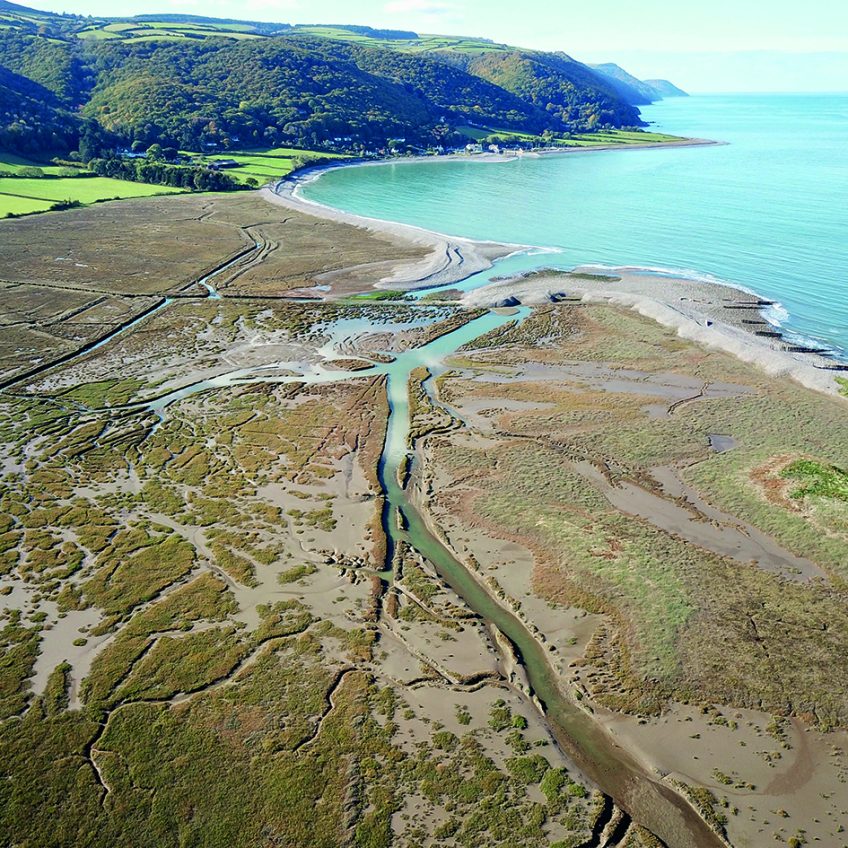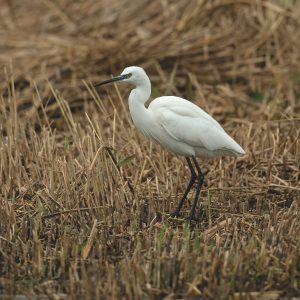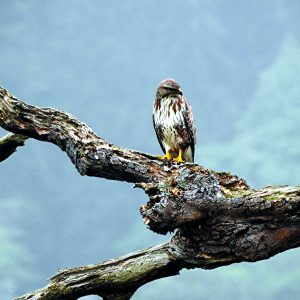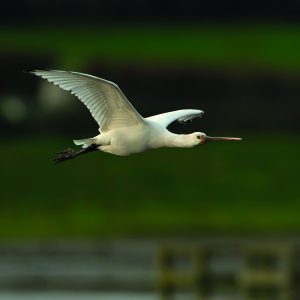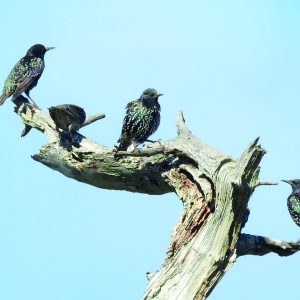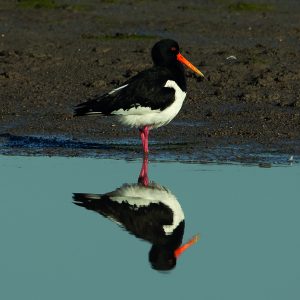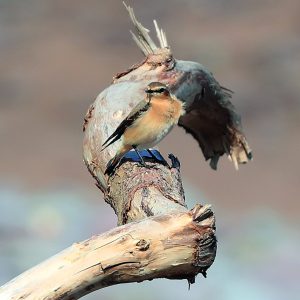Porlock Marsh from the air by Paul Feeney
An Exmoor Magazine Feature
Exmoor Magazine are working with us to provide a hand-picked selection of articles for you to enjoy, that delve into the landscapes, ecology, history and cultural life of Exmoor. Article is copyright of Exmoor Magazine.
Click here to subscribe to Exmoor Magazine for just £21.50 delivered through your letterbox!
RANGER NOTES: PORLOCK MARSH
by Exmoor National Park Ranger Charlotte Wray, for Exmoor Magazine
Exmoor is one of only a handful of National Parks in the UK to boast access to such extensive coastal habitat. From the towering sea cliffs of the Valley of Rocks to the remote inlets at Wringcliff, Glenthorne and Embelle, our border with the great Bristol Channel helps to tell the story of Exmoor’s past as a centre for the transport and trade of iron ore and lime. With the Mineral Line at Roadwater, the lime kilns cropping up at regular intervals along the coast and the partially completed Simonsbath to Porlock Railway, we see how this major waterway has shaped Exmoor’s past. But it’s not only in the story of Exmoor’s past that the Bristol Channel is a key protagonist; it is shaping the present and future of our story, too.
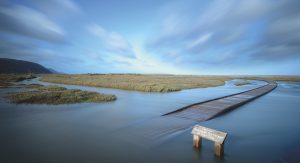 Porlock Marsh boardwalk by Jack Clegg
Porlock Marsh boardwalk by Jack Clegg
In 1996, the remnants of Hurricane Lili, which had caused catastrophic damage to parts of Cuba, the Bahamas and the US, reached the UK. Wind speeds of up to 87mph were recorded in the Solent in Hampshire and these ravaged the coasts of the UK.
The already vulnerable shingle ridge at Porlock was overcome with tidal water, which flooded the land to its south, and the resulting breach was caused by the sheer force of water attempting to exit the marsh with the falling tide. This massive event changed the future of Porlock Marsh and led to it being a case study in active tidal processes.
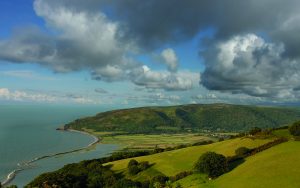 Porlock Marsh from Porlock Common by Paul Feeney
Porlock Marsh from Porlock Common by Paul Feeney
Today’s marsh is a dynamic habitat; walk along the ridge at low tide and you will see the only salt marsh in Exmoor – glasswort and sea blite covering vast swathes of once-productive farmland. Saltwater channels criss-cross the land and bird life appears limited to those that call the scrub and hedgerows of the southern boundary of the marsh home, including chiffchaff, blackcap and whitethroat.
But return mere hours later and you will see how the breach has transformed this ecosystem. At high tide the landscape is dotted with huge pools of brackish water, channels overflowing with the incoming tide and groups of birds such as oystercatcher and shelduck resting in between bouts of feeding. The marsh now provides a fluctuating habitat for wildlife. Little egret are a common sight, feeding on the fish fry which inhabit the choppy waters of the Channel, and during migration periods spoonbill, snow bunting and osprey have all been spotted in recent years.
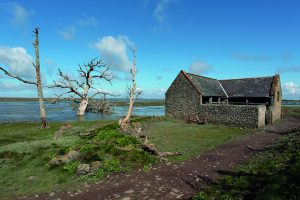 The remains of the old decoy man’s house by Paul Feeney
The remains of the old decoy man’s house by Paul Feeney
The importance of fluctuating habitats such as Porlock Marsh cannot be overestimated. As sea levels rise and temperatures change in the future, these areas offer a refuge for wildlife whose ranges have expanded and who now seek new places to populate. The resilience of habitats which have been created by natural processes will be high, but places like Porlock Marsh will continue to change. We can’t say for certain what future storms might bring to this shifting landscape, but for now we could do worse than spend an afternoon watching the stunning variety of birds who call this special place their home.
FIND OUT MORE: There is a very useful pocket Guide to Porlock Marsh available on the Exmoor National Park website (and at their Visitor Centres
Porlock Marsh 01: Porlock Marsh from the air by Paul Feeney.
Porlock Marsh 02: Porlock Marsh boardwalk by Jack Clegg.
Porlock Marsh 03: Porlock Marsh from Porlock Common by Paul Feeney.
Porlock Marsh 04: Male wheatear by Dave Roberts.
Porlock Marsh 05: Oystercatcher by Jack Clegg.
Porlock Marsh 06: Starlings by John Jupp.
Porlock Marsh 07: Spoonbill by Jack Clegg.
Porlock Marsh 08: Buzzard by John Jupp.
Porlock Marsh 09: Little egret by Jack Clegg.
Porlock Marsh 10: The remains of the old decoy man’s house, more recently used as a linhay barn providing shelter for cattle by Paul Feeney.
Follow Exmoor Magazine on facebook.com/exmoormagazine Instagram @exmoormagazine and Subscribe.
For more information about Porlock, have a look at our visitors guide.


